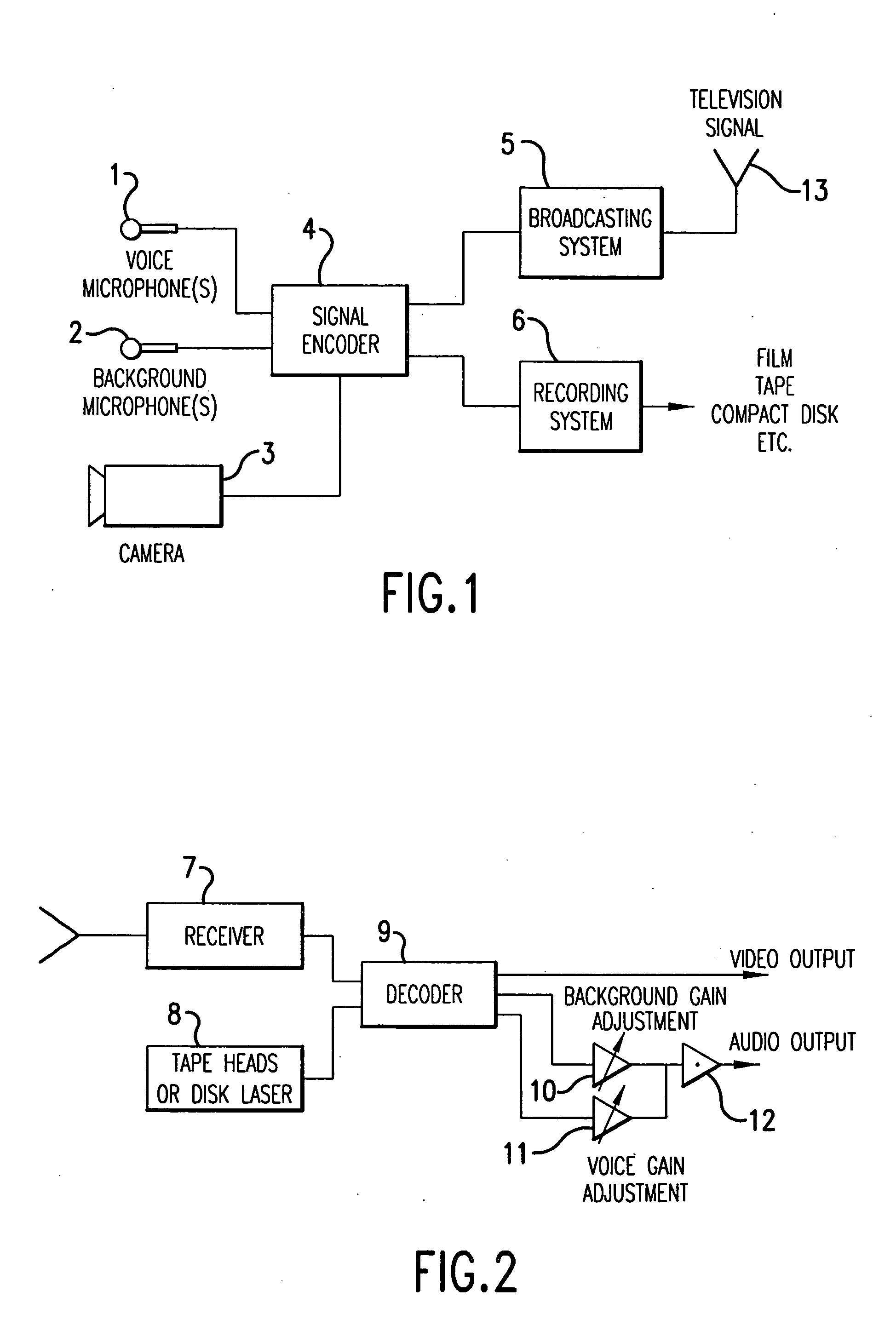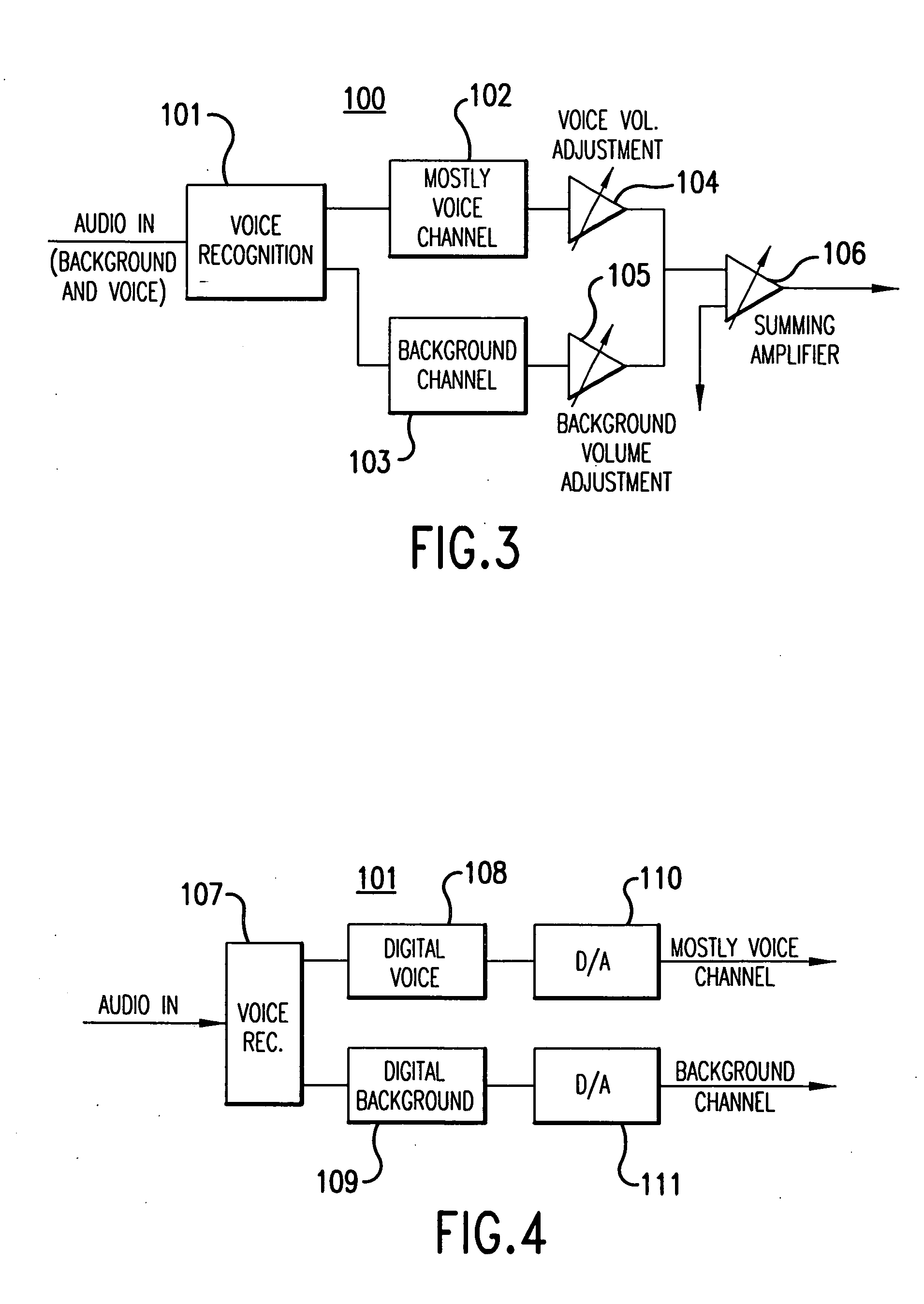Use of voice-to-remaining audio (VRA) in consumer applications
a voice-to-remaining audio and consumer application technology, applied in the field of audio signal processing methods and apparatuses, can solve the problems of high-end or expensive equipment including multi-channel amplifiers and multi-speaker systems, the ability to adjust the volume of the center channel signal is limited, and the level may not be satisfactory to other individuals in the room
- Summary
- Abstract
- Description
- Claims
- Application Information
AI Technical Summary
Benefits of technology
Problems solved by technology
Method used
Image
Examples
Embodiment Construction
[0038] The present invention describes a method and apparatus for providing voice-to-remaining audio capability. In addition, the invention discloses technological, ergonomical, economical, and applications specific improvements to voice-to-remaining audio (VRA) and AutoVRA. VRA refers to the personalized adjustment of an audio program's voice to remaining audio ratio by separately adjusting the vocal (speech or voice) volume independently of the separate adjustment of the remaining audio volume (which may include music, sound effects, laughter, or other non-speech sounds that are included in a total audio program). AutoVRA or AutoVRA hold refers to the automatic adjustment of the VRA ratio so that program transients (such as an explosion) do not obscure the voice.
Significance of Ratio of Preferred Audio to Remaining Audio
[0039] The present invention begins with the realization that the listening preferential range of a ratio of a preferred audio signal relative to any remaining ...
PUM
| Property | Measurement | Unit |
|---|---|---|
| current | aaaaa | aaaaa |
| frequencies | aaaaa | aaaaa |
| volume | aaaaa | aaaaa |
Abstract
Description
Claims
Application Information
 Login to View More
Login to View More - R&D
- Intellectual Property
- Life Sciences
- Materials
- Tech Scout
- Unparalleled Data Quality
- Higher Quality Content
- 60% Fewer Hallucinations
Browse by: Latest US Patents, China's latest patents, Technical Efficacy Thesaurus, Application Domain, Technology Topic, Popular Technical Reports.
© 2025 PatSnap. All rights reserved.Legal|Privacy policy|Modern Slavery Act Transparency Statement|Sitemap|About US| Contact US: help@patsnap.com



